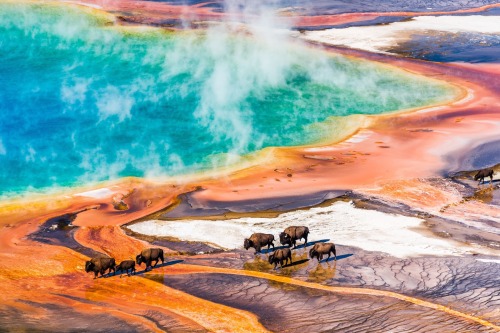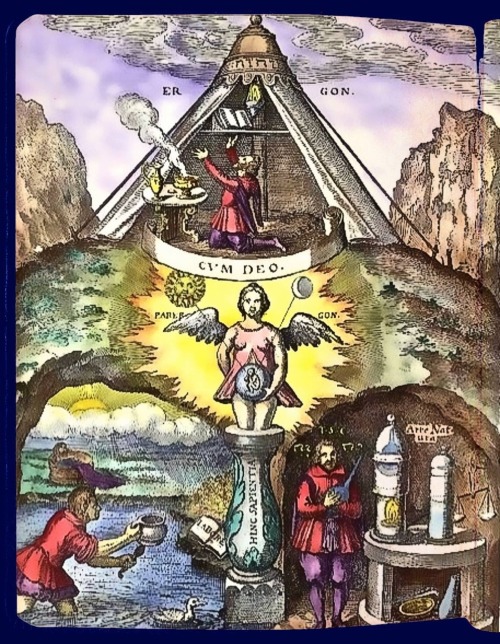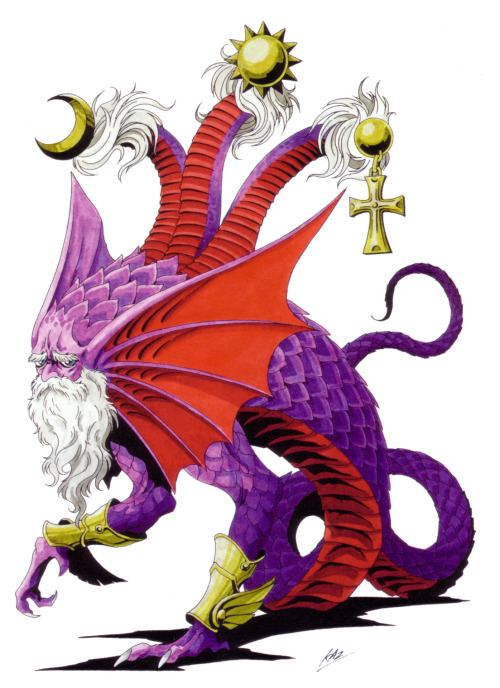#rosicrucian
Wisdom from Robert Fludd (aka Robertus de Fluctibus) (1574 - 1637):
Particulars are frequently fallible, but universals never. Occult philosophy lays bare Nature in her complete nakedness, and alone contemplates the wisdom of universals by the eyes of intelligence. Accustomed to partake of the rivers which flow from the Fountain of Life, it is unacquainted with grossness and with clouded waters.
Which of us has, at this day, the ability to discover those true and vivific numbers whereby the elements are united and bound to one another?
But, good God, what is this when compared with that deep and true music of the wise, whereby the proportions of natural things are investigated, the harmonical concord and the qualities of the whole world are revealed, by which also connected things are bound together, peace established between conflicting elements, and whereby each star is perpetually suspended in its appointed place by its weight and strength, and by the harmony of its lucent spirit.
In Elementary Music The Relation Of Earth To The Sphere of Water is 4 to 3, As There Are In The Earth Four Quarters of Frigidity to Three of Water.
Geomancy was a natural art, drawing on the inborn powers of the human soul to glean information from the larger soul of the world.
Marvelous is the love and fellowship of the flesh and the soul, of the spirit of life and the mud of the earth: for the whole man may be said to be formed from these two conjoined. For thus it is written: “God made man from the mud of the earth, and breathed the breath of life into his face ”[Genesis 2:7], giving him sense and intellect, so that through sense he might vivify the clay associated with him, and through intellect rule it; that likewise he might enter inwardly through the intellect and contemplate the wisdom of God, and outwardly through the sense behold the works of his wisdom. God illuminated the intellect from within but adorned the sense without, so that the whole man might find recreation in both, namely felicity within and enjoyment without. But since outward things cannot last long, man is bidden to turn from the things without to the things within and to ascend from the things within to the things above, that is to say from sense to imagination, from imagination to reason, from reason to intellect, thence to mind or intelligence and thus to God.
I was whilest I did sojourne in Rome, acquainted with a very learned and skillful personage, called Master Gruther. Hee was by birth of Swisserland, and for his excellency in the Mathematick, and in the Art of Motions and inventions of Machines, he was much esteemed by the Cardinall of Saint George. This gentleman taught mee the best of my skill in those practices: and amongst the rest, he delivered this magneticall experiment unto me, as a great secret, assuring me that it was tried in his Country, upon many with good successe…
Post link
This mandala has definite Rosicrucian connections in that it appeared in Theophilus Schweighart’s Speculum Sophicum Rhodo-Stauroticum of 1618, the TITLE page of which indicates that the book was in harmony with ‘the enlightened Fraternity of the Christian Rose-Cross’.
The mandala indicates the threefold nature of Alchemy.
On the summit of a hill stands a tent or tabernacle bearing upon its top the four lettered name of God. Within this tent an alchemist who is 'with God’ (cum Deo) works the Spiritual Alchemy through inner prayer, contemplation of the Divine, and aspiration. This is the higher ‘Work’ (Ergon).
Below, within the hill in two grottos ,the parergon or 'subsidiary work’ is undertaken.
On the left, Soul Alchemy is portrayed, while on the right is Physical Alchemy.
The work of Soul Alchemy is shown symbolically by the male figure wading through the waters of the unconsciousness in his Soul, bearing a pot (the vessel of his consciousness) and a spoon with which to fill this. One of the tasks of Soul Alchemy is to inwardly experience and bring into consciousness that which resides in the unconscious sphere within. This process involves a Soul purification through meditative exercises, symbolized by the bucket in which some clothes are being washed, and the rain which falls and washes clean. The unconscious element in the Soul is in a sense the prima materia of the work of Soul Alchemy.
On the right, in the domain of Physical Alchemy, the Alchemist is portrayed with his furnaces and vessels, working to grasp ’Nature through the Art’. He has achieved a degree of success and clasps the flask, in which the essence of his labours is contained, to his bosom. The four lettered name of God also makes its appearance in his realm, following the maxim 'as Above, so Below’. (T.S.C. is probably Theophilus Schweighardt Constantiensem.)
These lower realms are cut off within the body of the mountain from the higher Spiritual Alchemy, but they are linked by the winged Female Sophia figure supported upon a column stating 'This is Wisdom*. This figure represents the spiritual potentiality in the Soul. Flowing into her being are the energies of the Solar and Lunar Archetypes which give rise to the gestation of the Soul Child, the slowly developing spiritual perception of the Alchemist.
Thus there is united the outward striving of the triple Wale figures in the three realms of Alchemy with the threefold Female figure, which indicates the inner sensitivity and open receptivity also necessary for the Alchemist’s development.
Post link
‘So fly, ️ might be a damn witch..️
Shit.’
Song: 4 Elements
‘I am a witch, I like to hex’ - Billi Goat
Song: Old Lady

KANEKO’S CRIB NOTES XXIV: MERCURIUS
Alchemy is as complex as it is fascinating. Much more than the pursuit of transforming base metals into gold, alchemy possesses an enormously rich symbology with a huge body of texts and illustrations that offer deliberately cryptic hints at its processes. Needless to say, alchemy can also be quite befuddling even if you’ve familiarized yourself with it.
That brings us to Mercurius, who appears early in Shin Megami Tensei II. Kaneko’s Mercurius is surely based on that of the illustration above, which first appeared in a German alchemical manuscript of the 17th century. But this demon is more than just another name for Mercury, the Roman god; the alchemical imagery connects primarily to the element Mercury, aka quicksilver. The element Mercury was considered “prime matter” to alchemists, owing to its unusual properties such as being a metal that was a liquid at room temperature.

But that doesn’t explain everything that’s happening within the original illustration or Kaneko’s version. Firstly, why is the original named “Python”? A description of the illustration has this to say:
Python [Mercurius as three-headed dragon]: symbolic representation of an alchemical process within a flask.
Mercurius’ dragon form is very deliberate, as dragons (or serpents, hence “Python”) represent the volatile, chaotic early stages of alchemy. Clearly something violent or transformative is happening in this representation of Mercurius. In his Alchemical Studies, psychoanalyst Carl Gustav Jung interprets the “Python” illustration:
The spiritus mercurialis and his transformations represented as a monstrous dragon. It is a quaternity, in which the fourth is at the same time the unity of the three, the unity being symbolized by the mystagogue Hermes. The three (above) are (left to right); Luna, Sol, and coniunctioSolis et Lunae in Taurus, the House of Venus. Together they form ☿= Mercurius.
In simpler terms, the “coniunctio” (conjunction or, in this case, coitus) represents the alchemical “sacred marriage” or union of opposites: the female moon with the male sun, as seen in the first two heads. Combined with the horned Taurus(♉), whom astrologers considered to be ruled by Venus, this results in Mercury/Mercurius (☿) itself, the third head. These heads represent the element, but because they are attached yet to the volatile dragon, they are still as one. This complete figure is thus the quaternity, which symbolizes the reactions of Mercury in the alchemical flask.
Ultimately, Mercurius represents a single step of the alchemist’s journey, but is nevertheless a potent symbol in its own right. For more of Kaneko and alchemy, check out the very first Crib: Ouroboros!
Post link
I’ve wanted to draw this for a while, but I couldn’t find the time and motivation until now. I love these two!!! They need to stop being so frickin’ cute and complementing each other all the dang time.
Post link




St. Abbondio, Switzerland, near Lake Maggiore
H.R. Giger’s Via Crucis, XI&XII(1972)





